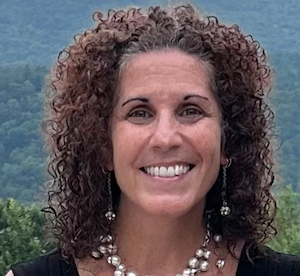Be a Tree: Reconceptualizing Early Education Through the Roots and Fruits Methodology of Teaching and Learning
by Virginia Dearani
It was Fall 2015 and our annual curriculum design was beginning to take shape organically, as children and teachers came together to explore the dominant themes present in the children’s imaginative play in the first six weeks of school. Our Reggio Emilia-inspired projects at Roots and Fruits Preschool evolved from the collective, where children and teachers share observations and ideas on our annual year-long project. Home, family, and community were the dominant words on our newsprint brainstorm as we explored our imaginations and centered in on the play that brought us the most joy.
The dramatic play area was very popular this year. All the children, boys, girls, and nonbinary, gathered to create meals, share stories, and dress up in worldly clothing from their linguistically and culturally diverse families. Through investigations on the meaning of “home,” we explored the different places we resided—an apartment, a trailer park, a duplex, a white picket-fenced house, the distant homelands that some had fled because of war or natural disasters. Coming together, we shared a collective understanding on the power of home as a place of gathering, storytelling, celebration—and for some, safety, while for others, moments of danger.
Over the course of many months, children engaged in stories and artistic re-creations of buildings transformed into homes, creating a communal village that depicted the many sources of support we each experienced inside our humble walls. As we went deeper into our exploration of this topic, a tragic event took place with one of our families. A mom entered the school one morning in tears, and shared the devastating news that a fire had destroyed their house and all of their belongings. The family moved to a hotel while beginning the stages of rebuilding and healing as they looked for a new place to call home. Their focus was on keeping their daughter in a routine during this extraordinary transition and seeking support to meet their basic needs for clothing, furniture, and household goods.
As we shared the news with the school community, everyone—young and old—came together, gathering supplies, offering child care, resources, and using their networks to help these members of our community find a new home. Donations were stored in a corner of my office until the family were resettled; children supported their classmate through practices of Radical Love (see Figure 1), where they created many magical moments of hugs, laughter, and hope. We practiced communal meditation, where we envisioned this family in a new home. Our project originated as a topic centered around our homes, their special meaning to each of us as individuals, and was transformed into a Village of Hope as each child and teacher gave a piece of their own home to someone in their community who needed it. As we each came together, in service of our own, we activated the powerful light within the darkness, by putting love into action.
 Virginia Dearani will be joining Thomas College as an assistant professor of early childhood education in Fall 2024 and is currently an education consultant in the State of Maine. She is a doctoral candidate in Literacy Education from University of Maine, Orono. Throughout the past 25+ years, Virginia has centered her life’s work in the areas of wholeness and healing in education for children 3 years old through adulthood. She emphasizes the joy of partnering with children and youth to create communities of belonging needed in our world today.
Virginia Dearani will be joining Thomas College as an assistant professor of early childhood education in Fall 2024 and is currently an education consultant in the State of Maine. She is a doctoral candidate in Literacy Education from University of Maine, Orono. Throughout the past 25+ years, Virginia has centered her life’s work in the areas of wholeness and healing in education for children 3 years old through adulthood. She emphasizes the joy of partnering with children and youth to create communities of belonging needed in our world today.